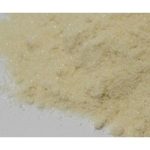BUY O-DSMT FOR SALE
Buy O-DSMT O-desmethyltramadol (O-DSMT), also referred to as desmetramadol, is an opioid analgesic and the main active metabolite of tramadol. It is a strong analgesic frequently used to treat acute and chronic pain that ranges in intensity from mild to severe. Desmetramadol may have therapeutic benefits, but its use carries a number of risks, including as addiction, overdose, and death. An opioid analgesic called desmetramadol is created from the tramadol molecule. Tramadol is metabolised by the liver enzyme CYP2D6, and the majority of its pain-relieving effects result from the conversion to Desmetramadol. Desmetramadol is a partial agonist rather than a complete agonist since it has a lesser affinity for opioid receptors in comparison to other opioids like morphine and fentanyl. Desmetramadol has a lower risk of overdosing on this than full agonist opioids, Buy O-DSMT.
THE EFFECTS OF DESMETRAMADOL
Desmetramadol works on the central nervous system, which includes the brain and spinal cord, to reduce pain. Endorphins, the body’s natural painkillers, are produced when the neurotransmitter dopamine levels in the brain are raised. Desmetramadol also affects serotonin release, which is thought to be involved in mood regulation and pain perception. Desmetramadol’s actions on the central nervous system are what cause a variety of side effects, such as nausea, vertigo, tiredness, and constipation. Desmetramadol’s effectiveness is strongly reliant on CYP2D6, the liver enzyme in charge of its metabolism. People with a less active form of CYP2D6, also referred to as “low metabolizers,” experience less analgesic effects from tramadol because of the restricted conversion of tramadol to desmetramadol.
THE RISKS OF DESMETRAMADOL
The hazards connected with desmetramadol include addiction, overdose, and death. The Medication Enforcement Administration (DEA) classifies the drug as a Schedule III restricted narcotic due to its potential for misuse and dependency. Desmetramadol can also induce nausea, dizziness, sleepiness, constipation, and respiratory depression, among other side effects. Desmetramadol and tramadol have comparable pain-relieving properties, although they differ in many ways. Due to its partial agonist characteristics and conversion to Desmetramadol, Tramadol has a decrease risk of overdose compare to other opioids. Tramadol is metabolize by CYP2D6, which may result in variable amounts of pain alleviation and adverse effects according to the CYP2D6 status of the individual.





